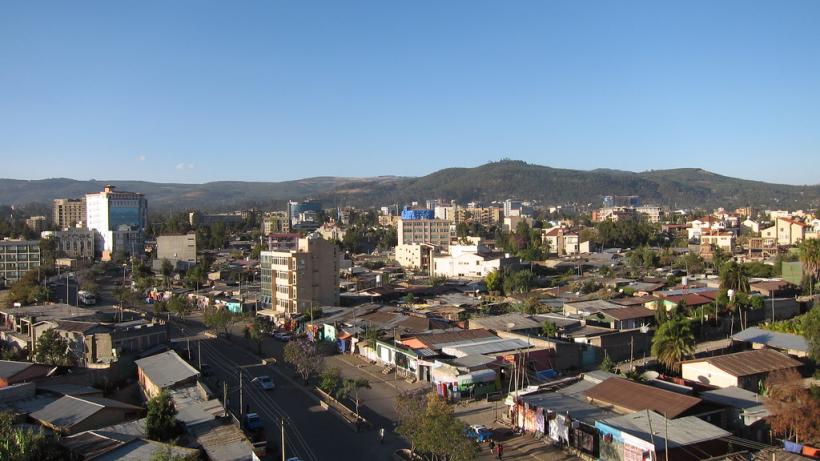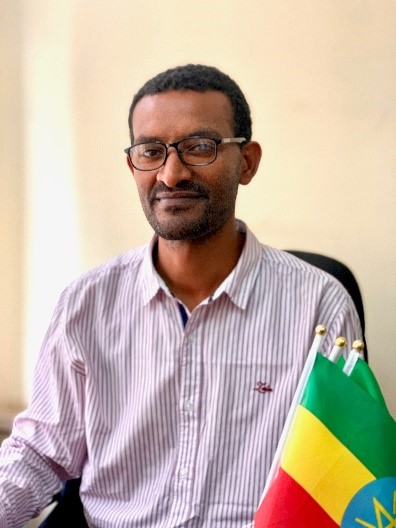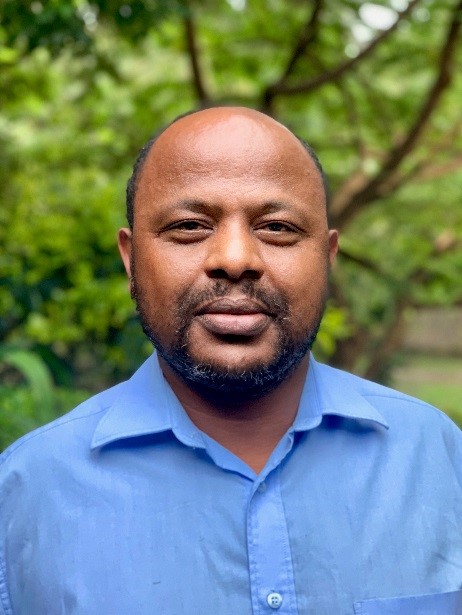
Humans of policy research: Personal stories from implementing and government partners of the Ethiopia Industrial Park Community impact evaluation
Policymakers, government partners, and local stakeholders play a critical role in the success (or failure) of an impact evaluation. Often motivated by a desire to have better evidence for decision making, policymakers engage with research teams on the development, design, and implementation of these impact evaluations. By working together, researchers can make sure that their findings are in direct conversation with key policy concerns and thereby increase the chances of their recommendations being adopted.
Borrowing a great idea from our colleagues at Development Impact, who recently gave voice to survey enumerators, in this post we spotlight policy and implementation partners of the Ethiopia Industrial Park Community Impact Evaluation. In Ethiopia, the government has embarked on an ambitious strategy of large-scale industrial development based on the creation of industrial parks as centres of export-oriented light manufacturing. With funding from IGC, UK aid from the UK government, PEDL, New York University Abu Dhabi, and the World Bank, the Ethiopia Industrial Park Community Impact Evaluation project evaluates the impact of the government’s flagship industrial park on its workers, their rural origin households, and their rural origin communities.
With this post, we hope to showcase how closely cooperating with policy makers and implementers can be a ‘win-win’ for both researchers and their partners. Ultimately, we hope to inspire other research teams to make an even greater effort to ensure that their work is well-aligned with the needs of local partners.
[The interviews below were conducted in Amharic and English and have been edited for clarity.]
Fatahun, the regional government partner
Can you tell us about your position and your role? In your job, what are you doing on a day-to-day basis?
Fatahun: I am a Director at the Enterprise and Industry Development Bureau of Ethiopia’s Southern Nations, Nationalities, and Peoples' Region (SNNPR). SNNPR is host to the government’s flagship Hawassa Industrial Park. In my role, I coordinate our work on manufacturing industries in different zones of SNNPR. On a day-to-day basis, my eight team members and I work with firms and our government colleagues at the sub-regional level to assist in the sourcing of labour for manufacturing firms.
In your perspective, why is this research project important?
Fatahun: There are many speculations about the impacts of industrial parks, including on employee health and the ability of industrial parks to improve the livelihood of both employees and the community in general. Policy makers are in dire need of sound scientific research that can document the impact of industrial parks. I believe that using a randomised control trial enables the research team to credibly investigate the impact of the Hawassa Industrial Park at the community level__ an area where there is little empirical evidence.
How do you and the regional government plan to use the findings of this research?
Fatahun: To inform our policy making and to carefully investigate our existing policies, laws, and practices. It will help us identify policies that need to be strengthened while removing bottlenecks that are hampering the development of industrial parks.
What should researchers keep in mind when working with the regional government?
Fatahun: Researchers should first explain the aim of the study to the government organisation both at federal and regional level. Since most researchers have a good grasp of the theory but might be limited in their understanding of the local context and culture, the discussions with the government authorities will show them how they can adapt the research design to fit the local context. They should engage with the concerned government authorities throughout the research process to ensure mutual understanding of the research goals, and for input and discussion on anything from data collection to initial results.
Hayat, the implementation partner

Can you tell us about your position and your role? In your job, what are you doing on a day-to-day basis?
Hayat: I am the Labour Sector Lead at Enterprise Partners (EP). EP is a social enterprise facilitating market development to create jobs and raise incomes of Ethiopians living with poverty, particularly women. We have a number of interventions supporting firms in the Hawassa Industrial Park. Our main intervention supports labour sourcing, recruitment, and soft skills training. This is where we have partnered with the research team. Other interventions include a) supporting workers to receive in-factory soft skills, gender and health training, b) supporting factories to have improved human resource management and to hire people living with disabilities, and c) a retention, matched savings and entrepreneurship scheme. All of our interventions started in Hawassa but some have now been expanded to the industrial parks in Mekelle and Kombolcha.
From your perspective, why is this research project important?
Hayat: The Ethiopia Industrial Park Community Impact Evaluation approaches the question of understanding the impact of working in the industrial park on individuals and communities comprehensively. At the moment, there are a lot of theories and beliefs on the impact of factory or industrial park work on the welfare of workers – both negative and positive. The extensive data collected by this project on pre-employment welfare status of potential job holders and their families and the subsequent tracking of actual job holders will help us understand factors both in and out of the workplace that impact on the well-being of individuals and their families.
How do you and EP plan to use the findings of this research? Has it already affected EP’s programming?
Hayat: The results of the research team’s findings will help EP incorporate necessary programmatic changes. In fact, we worked with the research team to include questions specific to our programme in their questionnaire, for example, to check for accuracy of the information being given to workers during the screening process. As other parks in Ethiopia (Mekelle, Kombolcha) have replicated the recruitment system in Hawassa, the findings will be broadly applicable.
What can researchers do to make their research more useful?
Hayat: The most important thing would be to produce data analysis and policy and programme-specific papers throughout the course of the project, rather than waiting until the endline.
What should researchers keep in mind when working with implementing partners like EP?
Hayat: Our respective teams and organisations clearly have different objectives and mandates but the approach of the research team can bridge those differences. I believe what has been successful is investing heavily in understanding all the stakeholders and programme details, and meeting the partners jointly, numerous times, to explain the research intentions. This investment at the start of the project is extremely important and has continued to be in order to work together to solve the inevitable challenges that come.
Fekadu, the federal government analyst

Can you tell us about your position and your role? In your job, what are you doing on a day-to-day basis?
Fekadu: I am a Project Manager at the Ethiopian Investment Commission (EIC). My current role involves the management of labour-related issues such as industrial peace, coordinating our one- stop services around industrial parks, and producing reports on issues including but not limited to productivity, wage and skill of industrial workers. On a daily basis, I am engaged in compiling data, doing analysis, preparing reports, and working on manuals related to industry parks.
How do you and the EIC plan to use the findings of this research?
Fekadu: In general, we have a limited understanding of the impact of industrial parks trickling down to community level and livelihood of individuals. The findings from this study will provide a unique insight about the community-level impact and this crucial information will help us when setting out strategies and provide guidance on how to achieve the sustainability of industrial parks. In addition, the study uses a randomised control trial, which should make the result fairly reliable. Overall, I believe this study gives policy makers working on industrial parks reliable empirical evidence that does not exist at the moment.
What is the most important thing that we should keep in mind to make this research useful for you and the EIC?
Fekadu: To make the research relevant for EIC, the research team should keep in mind that a development activity is a multi-actor process, not just solely a technocratic approach. Make sure that the research is grounded in the local reality. The team should also take into account how EIC could benefit from the research. In this regard, this research team has very well accommodated our interest in the research design, which will make the research output an exciting document that will be well placed in the policy discussions.
What should researchers keep in mind when working with the federal government?
Fekadu: Apart from coming up with interesting research ideas, researchers should know if their research idea is well-placed within the country’s development vision. This makes the process of obtaining research approval or collaboration from the federal government bodies much easier. Additionally, if it is well-aligned there’s an incentive for the federal government to go the extra mile to support the research.
All three interviewees provided their consent to use the interviews and pictures for this post, and the post has been shared with them.
This blog has also been posted on the World Bank blog Let’s Talk Development.
Editor’s Note: This blog is part of the IGC’s 10 year celebration series. This blog is linked to our work on public sector effectiveness.


